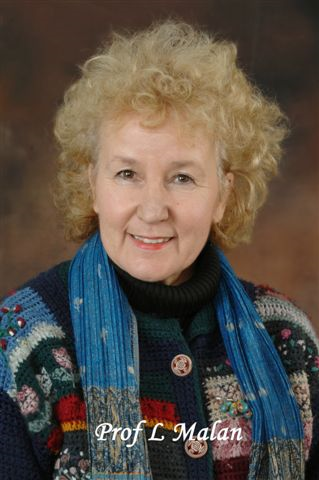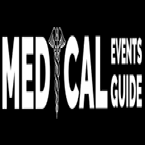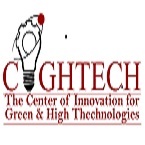Theme: Innovative Research and Ideas in Cardiology Field
Euro Cardiology Congress 2023

Euro Cardiology Congress 2023 with a aim to empower healthcare companies welcomes all of the experts from Medical Healthcare, Cardiologists, Surgeons, Medicine Specialists, Professors, Medical Researchers, Nurses and Nurse Practitioners, Fellow Scholars, Industrial Professionals, Physicians and Student Delegates to our two-day event “4th European Summit On Cardiology Reasearch” scheduled on April 17-18, 2023 Paris, France.
Euro Cardiology Congress 2023 with the subject Promoting the brand Innovative Research and Ideas in Cardiology Field might be offering the sector magnificence keynote talk, audio system providing medical studies, oral and poster presentations with interactive networking session and workshops.
The primary goal of the Conference is to offer a platform for all of the clinical experts along with college students to talk about their research the brand new improvements on cardiology research, medical updates and new discoveries with the cardiology and commercial specialists to develop the continuing research. The convention will spotlight on Cardiac Surgery and Heart Failure, Cardio-Oncology and Resources, Congenital Heart Disease and Pediatric Cardiology, Diabetes and Cardio metabolic Disease, Advanced Lipid Testing, Geriatric Cardiology, Cardiomyopathies, Acute, persistent Heart Failure and Heart Transplant, Interventions and Coronary Artery Disease, Structural Heart Disease, Pulmonary Hypertension, Peripheral Vascular, Non-invasive Imaging, prevention, Sports and Exercise Cardiology, medical updates, case reports.
Euro Cardiology Congress-2023 pact with an assembly course of 1000+ Global Events, 500+ Upcoming and Previous Symposiums and Workshops in USA, Europe and Asia and circulates 700+ Open Access journals which contains more than 30000 unique personalities, reputed specialists as article board people.
Track 1 : Cardiology
Cardiology is the study and treatment of disorders of the heart and the blood vessels. A person with heart disease or cardiovascular disease may be referred to a cardiologist. Cardiology is a branch of medicine that specializes in diagnosing and treating diseases of the heart, blood vessels, and circulatory system. These diseases include coronary artery disease, heart rhythm problems, and heart failure.
- Coronary artery bypass graft surgery (CABG)
- Artificial pacemaker surgery
- Defibrillation
- Heart valve surgery
Track 2 : Sudden cardiac arrest
Sudden cardiac arrest is a medical emergency that is a result of a sudden electrical malfunction. Unlike a heart attack, where the heart may continue to beat and only the blood supply to the heart is compromised, SCA causes the heart to stop beating entirely. Because a sudden cardiac arrest results in an abrupt, unexpected loss of heart function, breathing and consciousness, blood circulation to the brain and other vital organs cease instantly. If not responded to immediately, structural brain damage, or even death, can result in a matter of minutes.One of the leading causes of death among American adults is sudden cardiac arrest, including about 365,000 incidents per year, 95 percent of which are fatal.
Track 3 : Pediatric Cardiology
Pediatric cardiology deals with the irregularities and ailments of the heart in kids below 18 years of age. Different types of heart diseases or conditions can affect children in their early childhood or they may suffer from congenital defects. Pediatric cardiologists diagnose and treat children with heart conditions before they are born, through childhood and into adulthood.
- Echocardiography
- Persistent Truncus Arteriosus
- Salicylate Sodium
Track 4 : Preventive Cardiology and It’s Importance
Preventive cardiology is a subspecialty focused on lowering patients' risk for developing heart disease and having a first heart attack or stroke while also preventing further issues in people who already have cardiovascular disease. Genetics play a big role in your risk of developing heart disease, but so does your lifestyle. Johns Hopkins cardiologists are leaders in preventive cardiology research. With preventive cardiology, the goal is to reduce risk factors and prevent any signs of disease from getting worse.
- Statin
- Cardiovascular Risk
- Ischemic Heart Disease
Track 5 : Cardiac Rehabilitation
Cardiac rehabilitation is a supervised program that includes: Physical activity. Education about healthy living, including how to eat healthy, take medicine as prescribed, and quit smoking. Counselling to find ways to relieve stress and improve mental health. Reduce the risk of mortality secondary to CVD, and improve cardiovascular function to help patients achieve their highest quality of life possible.
- Tobacco cessation
- Psychosocial management
- Physical activity counselling
Track 6 : Cardio-Oncology
Cardio-oncology is a new field of interest in cardiology that focuses on the detection, monitoring, and treatment of cardiovascular disease occurring as a side effect of chemotherapy and radiotherapy.Cardio-oncology is neither the science nor the practice of treating heart tumors, rather an emerging multidisciplinary field that focuses on the cardiovascular management (prevention, diagnosis and treatment) of patients with cancer.The core objective of the cardio-oncology discipline is to ensure that "the cancer patient of today does not become the heart patient of tomorrow."
- Arterial hypertension
- Thromboembolic disease
- Valvular heart disease
Track 7 : Congenital Heart Conditions
Congenital heart disease is a general term for a range of birth defects that affect the normal way the heart works. The term "congenital" means the condition is present from birth. Congenital heart disease is one of the most common types of birth defect, affecting almost 1 in 100 babies born in the UK.CHD can be subdivided in non-cyanotic CHD and cyanotic CHD which is also called critical congenital heart disease (CCHD).CCHD can be further classified into 3 different types of lesions: right heart obstructive lesions, left heart obstructive lesions, and mixing lesions.
- ventricular septal defect
- pulmonary valve stenosis
- right ventricular hypertrophy
- overriding aorta
Track 8 : Coronary Heart Disease
Coronary heart disease is a narrowing of the small blood vessels that supply blood and oxygen to the heart. Coronary heart disease (CHD) is also called coronary artery disease. There are three types of coronary heart disease, including: Obstructive coronary artery disease. Non-obstructive coronary artery disease. Spontaneous coronary artery dissection.
- Age
- Diabetes
- High cholesterol
Track 9 : Myocarditis
Potential causes of myocarditis include Viruses. Many viruses have been linked to myocarditis, including those that cause the common cold (adenovirus); COVID-19; hepatitis B and C; parvovirus, which causes a mild rash, usually in children (fifth disease); and herpes simplex virus.
- Acute myocarditis
- Chronic myocarditis
- Lymphocytic myocarditis
Track 10 : CV Imaging
Cardiac magnetic resonance imaging (MRI) uses a powerful magnetic field, radio waves and a computer to produce detailed pictures of the structures within and around the heart. Doctors use cardiac MRI to detect or monitor cardiac disease. Cardiac imaging, also called cardiovascular imaging, is a broad term that includes several ways to take pictures of your heart and surrounding anatomy. The main types of cardiac imaging are: Echocardiogram (echo). Cardiac computed tomography (CT).
Track 11 : Heart Stroke
Leading risk factors for heart disease and stroke are high blood pressure, high low-density lipoprotein (LDL) cholesterol, diabetes, smoking and second hand smoke exposure, obesity, unhealthy diet, and physical inactivity. When pieces of plaque break free, blood clots can form, blocking the flow of blood to the heart. When that happens, the heart muscle does not get the oxygen and nutrients that it needs, and parts of the heart may become damaged or die. This is a heart attack, also known as myocardial infarction
- Ischemic Stroke
- Hemorrhagic Stroke
- Transient Ischemic Attack (Mini-Stroke)
Track 12: Peripheral Arterial Disease
Peripheral arterial disease (PAD) in the legs or lower extremities is the narrowing or blockage of the vessels that carry blood from the heart to the legs. It is primarily caused by the buildup of fatty plaque in the arteries, which is called atherosclerosis. Medications called statins are commonly prescribed for people with peripheral artery disease. Statins help lower bad cholesterol and reduce plaque buildup in the arteries. The drugs also lower the risk of heart attacks and strokes.
- Blood vessel inflammation
- Injury to the arms or legs
- Changes in the muscles or ligaments
- Radiation exposure
Track 13 : Aortic Disease
Aortic valve disease is a type of heart valve disease. In aortic valve disease, the valve between the lower left heart chamber (left ventricle) and the main artery to the body (aorta) doesn't work properly. The aortic valve helps keep blood flowing in the correct direction through the heart. The causes of an aortic aneurysm are often unknown, but can include: Atherosclerosis (narrowing of the arteries). Inflammation of the arteries. Inherited conditions, especially those that affect connective tissue.
- Thoracic Aortic Aneurysms. A thoracic aortic aneurysm happens in the chest
- Abdominal Aortic Aneurysms. An abdominal aortic aneurysm happens below the chest
- Other Types of Aneurysms. Aneurysms can happen in other parts of your body
Track 14 : Heart Rhythm and Arrhythmias
A heart arrhythmia (uh-RITH-me-uh) is an irregular heartbeat. Heart rhythm problems (heart arrhythmias) occur when the electrical signals .This is a heartbeat that has an abnormal speed or rhythm. The “a” prefix in arrhythmia means a lack or an absence of something. In this case, a lack of (normal) rhythm. Meanwhile, “dys” is a prefix that means something is difficult or doesn't work properly.
- Ventricular fibrillation
- Ventricular tachycardia
- Premature ventricular beats (PVCs)
- Torsades de pointes
Track 15 : HIV and Heart Disease
Individuals infected with HIV have a significantly increased risk for a variety of cardiovascular complications, including acute myocardial infarction, heart failure with both reduced and preserved ejection fraction, sudden cardiac death, peripheral arterial disease and stroke. Untreated HIV increases the risk of heart disease, but starting treatment right away after diagnosis can reduce these risks.
Track 16 : Hypertension
High blood pressure, also called hypertension, is blood pressure that is higher than normal. Your blood pressure changes throughout the day based on your activities. Having blood pressure measures consistently above normal may result in a diagnosis of high blood pressure (or hypertension).Some of the symptoms of hypertension are early morning headaches, nosebleeds, irregular heart rhythms, vision changes, and buzzing in the ears. Severe hypertension can cause fatigue, nausea, vomiting, confusion, anxiety, chest pain, and muscle tremors.
Track 17 : Interventional Cardiology
Interventional cardiology is a non-surgical option which uses a small, flexible tube called a catheter to repair damaged or weakened vessels, narrowed arteries, or other affected parts of the heart structure. “The major difference between interventional cardiology and general cardiology is that interventional cardiologists are trained to perform specific catheter-based treatments for heart disease, whereas general cardiologists are not trained in those procedures”.
List of Interventional Procedures :
- Cardiac catheterization/Angiogram
- Carotid stenting
- Percutaneous coronary intervention (PCI)/Angioplasty
- Alcohol septal ablation
- Atrial septal defect closure
- Balloon aortic valvuplasty
- Balloon mitral valvuplasty
- Left atrial appendage closure
Track 18 : Myocardial Biology/Heart Failure
A heart attack (medically known as a myocardial infarction) is a deadly medical emergency where your heart muscle begins to die because it isn't getting enough blood flow. This is usually caused by a blockage in the arteries that supply blood to your heart. Heart failure means that the heart is unable to pump blood around the body properly. It usually happens because the heart has become too weak or stiff. It's sometimes called congestive heart failure, although this name is not widely used now.
- Left-sided heart failure. Left-sided heart failure is the most common type of heart failure
- Right-sided heart failure. The right heart ventricle is responsible for pumping blood to your lungs to collect oxygen
- Diastolic heart failure
- Systolic heart failure
Track 19 : Stem cell and Regenerative Biology
Stem cells are the fundamental unit of regeneration and reprogramming of cellular fate, key events that govern development, homeostasis, health and successful implementation of therapies for human disease. Stem cells are cells with the potential to develop into many different types of cells in the body. They serve as a repair system for the body. There are two main types of stem cells: embryonic stem cells and adult stem cells.
Track 20 : Women and Heart Disease
Women have smaller arteries than men, so coronary artery disease develops differently, and more diffusely. Also, CAD in women tends to afflict smaller arteries that feed the heart. Although heart disease is sometimes thought of as a man's disease, almost as many women as men die each year of heart disease in the United States.
Estrogen helps to protect the heart, which is why women tend to develop heart disease about 10 years later in life than men. Broken heart syndrome, also called stress-induced cardiomyopathy.
- Various heart conditions that can affect women differently from men.
- Common types include coronary artery disease, arrhythmia, diseases of the heart valves, among others.
- Treatment includes lifestyle changes, medications, surgical procedures, cardiac rehabilitation.
Track 21 : Lipid Disorders
Lipid metabolism disorders, such as Gaucher disease and Tay-Sachs disease, involve lipids. Lipids are fats or fat-like substances. They include oils, fatty acids, waxes, and cholesterol. If you have one of these disorders, you may not have enough enzymes to break down lipids.
- Bassen-Kornzweig syndrome
- Chylomicronemia syndrome
- Familial lipoprotein lipase deficiency
- Methylmalonic acid blood test
- Methylmalonic acidemia
- Niemann-Pick disease
- Xanthoma
Track 22 : Heart Valve Complications
In heart valve disease, one or more of the valves in your heart doesn't work properly. Your heart has four valves that keep blood flowing in the correct direction. In some cases, one or more of the valves don't open or close properly. This can cause the blood flow through your heart to your body to be disrupted.
- Regurgitation (or leakage of the valve). When the valve(s) do not close completely, it causes blood to flow backward through the valve.
- Stenosis (or narrowing of the valve). When the valve(s) opening becomes narrowed, it limits the flow of blood out of the ventricles or atria.
Conference Highlights
- Cardiology
- Pediatric Cardiology
- Preventive Cardiology and It’s Importance
- Cardiac Rehabilitation
- Cardio-Oncology
- Congenital Heart Conditions
- Coronary Heart Disease
- Myocarditis
- CV Imaging
- Peripheral Arterial Disease
- Aortic Disease
- Heart Stroke
- Heart Rhythm and Arrhythmias
- HIV and Heart Disease
- Hypertension
- Interventional Cardiology
- Myocardial Biology/Heart Failure
- Stem cell and Regenerative Biology
- Women and Heart Disease
- Lipid Disorders
- Heart Valve Complications
To share your views and research, please click here to register for the Conference.
To Collaborate Scientific Professionals around the World
| Conference Date | April 17-18, 2023 | ||
| Sponsors & Exhibitors |
|
||
| Speaker Opportunity Closed | Day 1 | Day 2 | |
| Poster Opportunity Closed | Click Here to View | ||
Useful Links
Special Issues
All accepted abstracts will be published in respective Our International Journals.
Abstracts will be provided with Digital Object Identifier by





















